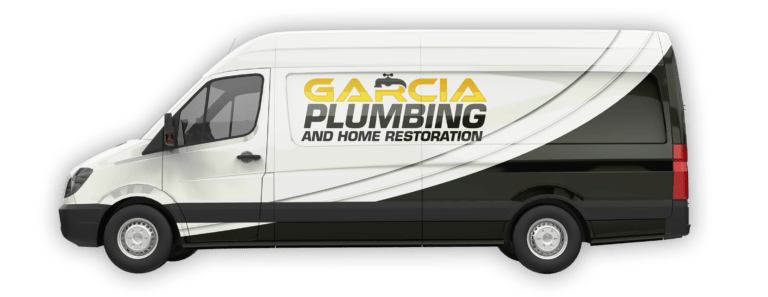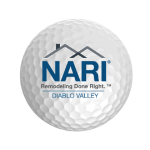The demanding schedule of a mold inspector in Danville is often overlooked, but it plays a crucial role in maintaining the safety and well-being of residents. Mold inspectors are responsible for identifying and assessing potential mold issues in homes and buildings, ensuring compliance with relevant laws and regulations. Their varied tasks include conducting thorough inspections, testing for mold presence, and meticulously documenting their findings.
Thorough training and certification are imperative for mold inspectors to navigate the complexities of their work effectively. In this profession, precision is key as they must adhere to specific legal requirements while carrying out their duties. A day in the life of a mold inspector involves meticulous attention to detail as they assess properties, collect samples for analysis, interpret test results, and prepare comprehensive reports.
By understanding the importance of mold inspection, homeowners can take proactive measures to prevent potential health hazards caused by mold growth. This blog post will delve into the intricacies of a professional mold inspector’s daily routine in Danville, shedding light on their indispensable role in upholding public health standards.
Table of Contents
ToggleThe Importance Of Hiring A Professional Mold Inspector
Accurate mold detection is crucial. While some may consider conducting DIY mold inspections, it’s important to recognize the risks involved and understand why hiring a professional mold inspector in Danville is the best course of action.
Why Hiring An Expert Is Crucial For Accurate Mold Detection
Mold growth can often be hidden within walls, under flooring, or in other hard-to-reach areas. Without proper training and experience, it can be challenging for homeowners to identify these concealed issues. This is where the expertise of a professional mold inspector becomes invaluable. These inspectors possess comprehensive knowledge about different types of molds and their specific characteristics. They are trained to detect even the slightest signs of mold infestation that might go unnoticed by untrained eyes.
The Risks Associated With DIY Mold Inspections
While attempting a DIY approach may seem cost-effective at first glance, it can lead to costly consequences if not done correctly. One major risk involves misidentifying the type of mold present in your home. Certain molds, such as black mold (Stachybotrys chartarum), pose serious health hazards and require specialized handling during removal. Without proper identification, you could inadvertently expose yourself and others to harmful spores or worsen the situation by spreading them further.
DIY methods often lack thoroughness due to limited access to professional-grade equipment. Mold growth can extend beyond what meets the eye, making it essential to assess air quality and conduct comprehensive testing throughout your property. Professional inspectors utilize cutting-edge tools like moisture meters, infrared cameras, and air sampling devices to accurately assess the extent of contamination.
How Professional Inspectors Use Specialized Equipment To Identify Hidden Mold Growth
Professional mold inspectors employ various techniques and tools that enable them to uncover hidden sources of moisture and detect concealed molds effectively. With infrared cameras, they can identify temperature variations that indicate possible water leaks or areas of increased moisture. Moisture meters are used to measure the moisture content in different materials, allowing inspectors to pinpoint potential mold growth hotspots.
Air sampling devices collect samples of the indoor air, which are then analyzed in a laboratory for mold spore concentration and identification. These results provide valuable insights into the severity of the mold issue and help inspectors develop appropriate remediation strategies.
The Benefits Of Hiring A Certified Mold Inspector For Peace Of Mind
By engaging a certified mold inspector, you gain peace of mind knowing that your home is being thoroughly assessed by a trained professional. Certified inspectors have undergone rigorous training and adhere to industry standards, ensuring a comprehensive evaluation of your property’s mold situation.
Moreover, their expertise extends beyond detection. They can provide guidance on effective remediation methods and preventive measures to mitigate future risks. With their knowledge and experience, they can help you create a safe living environment free from the harmful effects of mold.
Tips And Techniques For Thorough Mold Inspection
Understanding Common Areas Where Molds Thrive In Homes Or Buildings
Mold can be a persistent problem in many homes and buildings, especially in areas with high humidity levels. As a professional mold inspector in Danville, it is crucial to understand the common areas where molds tend to thrive. These include:
- Bathrooms: The warm and moist environment of bathrooms provides an ideal breeding ground for mold growth. Pay close attention to shower stalls, bathtubs, sinks, and toilets.
- Kitchens: Moisture from cooking activities and leaks around sinks or appliances can create favorable conditions for mold development.
- Basements: Poor ventilation and potential water leaks make basements susceptible to mold infestations. Inspect corners, walls, and flooring carefully.
- Attics: Improper insulation or roof leaks can lead to moisture buildup in attics, making them prone to mold growth.
- Crawlspaces: Damp soil or inadequate ventilation in crawlspaces can result in excessive moisture accumulation that promotes mold colonization.
To effectively tackle these issues, professional mold inspectors employ various techniques.
Techniques Used By Professionals To Detect Hidden Moisture Sources That Contribute To Mold Growth
Detecting hidden moisture sources is essential for preventing further mold proliferation. Mold inspectors utilize several techniques to identify these concealed problem areas:
- Thermal Imaging: Using infrared cameras, technicians are able to detect temperature variations that indicate potential water leaks behind walls or ceilings.
- Moisture Meters: These handy devices measure the moisture content of building materials such as drywall or wood, helping identify areas with elevated humidity levels.
- Air Sampling: By collecting air samples from different locations within a property, professionals can assess the concentration of airborne spores and determine if there is an active mold issue.
- Visual Inspection: A thorough visual examination allows inspectors to spot visible signs of mold growth, water damage, or musty odors.
Importance Of Visual Inspection Combined With Air Sampling For Comprehensive Assessment
While air sampling provides valuable information about the presence and concentration of mold spores in the air, it is crucial to combine it with a visual inspection for a comprehensive assessment. Visual inspection helps identify visible signs of mold growth, such as discoloration or fuzzy patches on surfaces. It also allows inspectors to locate potential moisture sources that may not be evident through air sampling alone. By combining these two methods, professionals can accurately determine the extent and severity of the mold problem.
How Proper Documentation Helps Identify The Extent And Severity Of The Mold Problem
Proper documentation plays a vital role in mold inspections as it aids in identifying the extent and severity of the issue. Mold inspectors meticulously document their findings during inspections, including photographs, detailed notes, and measurements. This documentation serves multiple purposes:
- Comparison: By documenting conditions before and after remediation efforts, inspectors can assess whether the measures taken effectively resolved the mold problem.
- Reporting: Detailed reports provide property owners with a clear understanding of the extent and severity of mold issues, helping them make informed decisions regarding remediation.
- Legal Purposes: In cases where legal action is necessary, accurate documentation serves as evidence supporting claims related to property damage or health concerns caused by molds.
Exploring Mold Inspection Results In Danville, California
Statistics On Common Types And Levels Of Molds Found During Inspections In Danville
During mold inspections in Danville, California, it is crucial to understand the prevalence and levels of different types of molds commonly encountered. One common type is Aspergillus, which can be found both indoors and outdoors. This mold thrives in warm and humid environments, making it particularly prevalent in coastal regions like Danville. Another frequently identified mold is Stachybotrys chartarum, also known as black mold. This toxic mold typically thrives in damp areas with high cellulose content such as drywall or carpeting.
In addition to these molds, inspectors often come across Cladosporium and Penicillium species. Cladosporium tends to grow on surfaces such as carpets and fabrics while Penicillium can be found in water-damaged buildings or areas with poor ventilation. These findings highlight the importance of thorough inspections to identify potential health risks associated with various types of molds.
Insights Into How Climate Affects The Prevalence And Growth Patterns Of Molds
The climate plays a significant role in the prevalence and growth patterns of molds in Danville. The region experiences a Mediterranean climate characterized by mild winters and warm summers. The combination of moderate temperatures and occasional humidity creates favorable conditions for mold growth.
Furthermore, the proximity to the coast exposes Danville to marine influences that contribute to higher moisture levels. Increased moisture provides an ideal environment for molds to thrive, especially if there are underlying issues such as water leaks or inadequate ventilation within buildings.
Comparing Indoor Air Quality Standards With Actual Results From Inspections
When conducting mold inspections, it is essential to compare the results with established indoor air quality standards. These standards help determine whether the observed mold levels pose a risk to occupants’ health.
Inspectors assess factors such as spore counts per cubic meter of air (measured through air sampling) and the presence of toxic molds. By comparing these findings with established guidelines, inspectors can provide accurate assessments of the indoor air quality in Danville properties.
Case Studies Highlighting Specific Instances Where Thorough Inspections Uncovered Significant Health Risks
Thorough mold inspections have revealed numerous instances where potential health risks were identified. For example, a residential property in Danville underwent an inspection due to persistent respiratory issues experienced by the occupants. The inspection uncovered high levels of Aspergillus and Stachybotrys chartarum, indicating a severe mold infestation. Prompt remediation measures were taken to ensure the safety and well-being of the residents.
In another case study, a commercial building in Danville exhibited signs of water damage, leading to suspicions of mold growth. The inspection confirmed the presence of Cladosporium and Penicillium molds in several areas. Immediate remediation was necessary to prevent further contamination and protect the employees’ health.
These case studies emphasize the importance of comprehensive mold inspections in identifying potential health risks and facilitating appropriate remediation actions.
By delving into statistics on common types and levels of molds found during inspections, understanding how climate influences mold prevalence, comparing results with indoor air quality standards, and showcasing real-life case studies, it becomes evident that professional mold inspectors play a vital role in ensuring safe living and working environments for residents of Danville, California.
Odor Removal: Key Aspect Of Mold Inspection And Remediation
Unpleasant odors can serve as a telltale sign of hidden or active molds lurking within our homes. As mold grows and spreads, it releases volatile organic compounds (VOCs) that emit a distinct musty smell. Professional mold inspectors understand the significance of these odors and employ various techniques to eliminate them effectively.
Addressing odor issues is crucial in preventing further mold growth and ensuring a healthy living environment. When left unattended, mold spores can multiply rapidly, leading to extensive damage and potential health risks for occupants. To combat this, professionals focus on thorough cleanup efforts that include odor removal as an integral part of the process.
One technique commonly used by mold inspectors is identifying and eliminating the source of the musty smell. This involves conducting a comprehensive inspection to pinpoint areas affected by mold growth. By identifying the root cause, such as water leaks or excessive moisture, professionals can prevent future infestations and mitigate any existing ones.
Once the source has been addressed, professionals turn their attention to removing lingering odors caused by molds. Advanced air purification systems are often employed for this purpose. These systems utilize filters designed specifically to capture airborne particles, including mold spores and VOCs responsible for unpleasant smells. By effectively filtering out these contaminants from indoor air, they help improve overall air quality while eliminating odors associated with mold infestations.
In addition to air purification systems, professionals may also employ other techniques to tackle odor removal during mold remediation:
- HEPA Vacuuming: High-efficiency particulate air (HEPA) vacuums are used to thoroughly clean surfaces contaminated with mold spores. This helps remove any residual odors left behind after visible signs of mold have been eliminated.
- Encapsulation: In cases where complete removal of mold-infested materials is not feasible or practical, encapsulation may be recommended. This involves applying a specialized sealant over affected surfaces to prevent the release of mold spores and associated odors.
- Ozone Treatment: Ozone generators can be utilized in certain situations to neutralize mold-related odors. Ozone, a highly reactive gas, is effective in breaking down organic compounds responsible for unpleasant smells. However, it is important to note that ozone treatment should only be carried out by trained professionals due to potential health risks associated with its improper use.
By employing these odor removal techniques, professional mold inspectors ensure that not only are visible signs of mold addressed but also the underlying cause and associated smells are effectively eliminated. This comprehensive approach helps create a healthier living environment and prevents further mold growth.
Conclusion
By now, you have a deeper understanding of what it takes to be a professional mold inspector and why their expertise is essential when dealing with potential mold issues. If you suspect mold growth or want to ensure your home or business is free from harmful molds, it’s time to take action. Reach out to a reputable mold inspector in Danville today to schedule an inspection and protect your property from further damage.
Unlock A Healthier Home With Professional Mold Inspection And More!
Looking for more than just a service? Garcia Plumbing and Home Restoration offers an experience! Our top-tier team, both licensed and insured, is dedicated to not only meeting but exceeding your expectations. Dive into our comprehensive range of services – from essential plumbing solutions to the intricate art of professional mold inspection, remediation, and storm and water damage restoration.
Our heart beats for Contra Costa County homeowners and beyond. Powered by a legacy of glowing reviews and countless referrals, Garcia Plumbing and Home Restoration stands as a beacon of quality and unmatched expertise. When it comes to your home’s health and safety, why settle for anything less than the best?
Discover the Garcia difference. Reach out now and redefine what exceptional service feels like!




